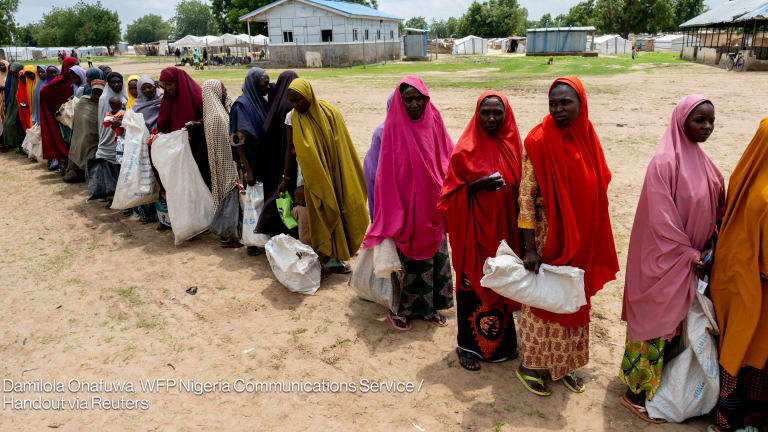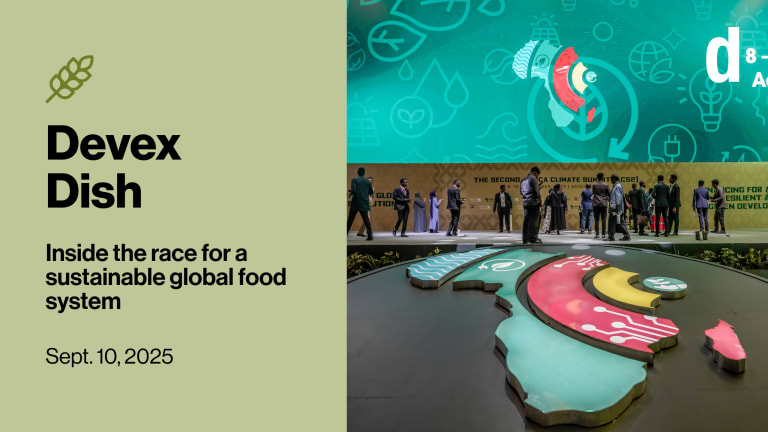
CANBERRA — At the 2019 Asia Pacific Humanitarian Leadership Conference in Melbourne, Adeso Executive Director Degan Ali delivered a keynote address that sparked the attention of humanitarian organizations as she explained the localization agenda was being prevented by “racism that operates in the humanitarian system.”
The comments came from decades of experience — and frustration — as her organization faced challenges in receiving funding and support for innovative approaches to aid in Africa that would put local knowledge and community needs at the center or programming development.
“We have to be honest about who the humanitarian system is — and it is dominated by the U.N. and iNGOs who are predominantly Westerners and mostly white people.”
— Degan Ali, executive director, AdesoFollowing the conference, Ali discussed these frustrations with Devex — and why discussions on systemic racism receive pushback.
This interview has been edited for length and clarity.
Can you discuss the issues of racism you highlighted in your speech and the response you get when engaging the humanitarian sector on this topic?
When I talk about racism, I am talking about the systemic structure of power, money, and decision-making that goes into the design of the humanitarian and even aid architecture systems.
Rethinking inclusion in Australian aid projects
How can suppliers to Australia's aid projects practice inclusion in a sustainable manner? Experts highlight gaps in policy and the way forward.
Localization is a result of the pushback on these systems — communities and local actors are saying enough is enough, and pushing back on the current system. But there are so many elements where the system is seeped in colonial and racist structures.
The thing is it is hard to have an honest conversation. Most people in the humanitarian world are good people who have good intentions — they see themselves as people who are saviors or have even sacrificed their lives to work in conflict countries and the comforts of their lives in the North to live in a tent. In the humanitarian and aid architecture — particularly those coming from Europe, Australia and New Zealand, this conversation becomes defensive and antagonistic.
People say “I’m a good person.” But that doesn’t mean they’re not racist. They still come into a country and situation with baggage. The KKK and Neo-Nazis are not the only racists, but that is where the conversation goes making it difficult to move forward — there is defensiveness and denial.
What do you see as the causes of this systemic racism?
We have to be honest about who the humanitarian system is — and it is dominated by the U.N. and iNGOs who are predominantly Westerners and mostly white people. The majority of the decision-making in these institutions lies in the hands of white people. Southern representation — whether it is from national governments or whether it is from southern society — is limited.
But despite this, it feels that almost every single issue — including the Sustainable Development Goals — are trying to be met in southern countries. And while the implementation of the U.N. system is in the South, the decision-making and especially the power remains among Westerners. The closest they get to the ground is in big city offices such as Nairobi where decisions made — not at the community level and certainly not at the level where they are directly engaging with the people affected.
They try to say they are community driven, but they’re not. There is no real community-driven design.
“I haven’t seen quality aid in Somalia in over 20 years.”
—With this decision-making happening away from the communities, how have you seen this impact lives and livelihoods?
I have seen over the past 20 years in working in Somalia where we had a famine in 2011 and almost reached a famine in 2017, that pumping money into a situation does not necessarily equal quality.
We knew the droughts were coming, that they would become more and more frequent. We knew all of these things, but the decision was made to pump $100 million into NGOs over a five year period to build resilience after the 2011 drought.
Did that stop the 2017 drought? No, because they were not doing anything valuable for the people. They have no understanding of the context, are still designing programs and interventions at the Nairobi level, and still, are not releasing resources and power in terms of these designs to the people and the government.
So money is not necessarily the solution to every problem — it is quality. And I haven’t seen quality aid in Somalia in over 20 years. There are only very, very, very few cases I would consider quality aid.
How have these systems impacted you and Adeso’s ability to deliver support?
Aid community caught off guard by Somalia drought
After years of drought, experts were expecting an average rainy season in Somalia — but that's not what happened, and the aid community is now struggling to attract attention to the crisis.
We were the first organization to pioneer cash in Somalia — we introduced this in 2002 despite facing a lot of skepticism and criticism that it would be wasted or be spent on weapons and start wars. But we understood the local economy and understood why it was better in the drought setting.
International responders couldn’t make that leap and understand why cash was better. It was the Somalis who understood how household systems worked and why food aid was not suitable.
Only Oxfam supported us and we had the program independently assessed and verified because of the criticism. Now it is the standard and almost a one trick pony for NGOs. But with Somalia, at what point do you transition to safety nets?
If people who experienced drought in 2011 has $30 or $40 predictable, long-term, three to five year guarantee of transfer, they would not have made the decision to walk to Mogadishu or other camps and risk the lives of their children. They would have made different decisions if they had a predictable transfer. But the system is not predictable and does not want to be predictable — it does not enable the flexibility to transition humanitarian budgets to more longer-term commitments. They are siloed and don’t know how to innovate and come up with new financing models for aid.
“What gives me hope is what is happening in Asia.”
—We have been talking about safety nets since 2007 in Somalia as Adeso, but we are only a local NGO and don’t get the resources needed to implement what is needed. But now in 2019 international NGOs are talking about it, and they’re getting funded millions to pilot programs — without an understanding of the context like we have.
When we are overlooked in favor of internationals, and I don’t know what to call it if it’s not a racist system.
Are you seeing these issues of systemic racism becoming worse, or are there avenues for progress?
What gives me hope is what is happening in Asia, more than anything else.
Asia is far ahead of the rest of the world in terms of trying to take back power, with the Indonesian government leading the way in deciding that no international NGO will come in with responses the way they used to. And I suspect that will happen with Nepal if there is another crisis there — I don’t think it will be the free-for-all that it used to be.
Localization is important here with the Australian Red Cross is really doing great work to support localization — it should be something that replicates across all the regions.
The worry is that, after 2020, localization and the Grand Bargain may die. So we need to demonstrate quick wins and changes to the ecosystem to build the infrastructure for the future that will support local leadership in humanitarian issues.
In civil society, we need to focus on working with national governments and regional authorities to help become more sophisticated in their analysis and understand how they can push back. We need to work with them as allies and support them. It is important for their future and ours.








